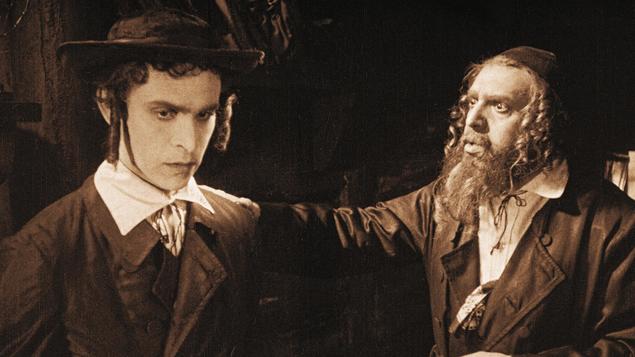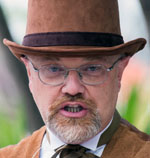
“The old homeland is soon abandoned, but a new one is not found so soon.”
By Eric George Tauber

SAN DIEGO — In the early days of moving pictures, reels of film came with sheet music. Keystone Cops raced around the screen to live accompaniment on a tinny, upright pianos. Today, we try to recapture some of that magic by mixing old silent films with live music. I’ve seen it at the Symphony before and last night at the Garfield Theatre with Das Alte Gesetz (The Ancient Law). This may be the one venue in town where people with kippahs and sheitels sit next to “modern” Jews sharing a moment of common heritage together.
Historian Cynthia Walk introduced the film, now on its West Coast Tour. It premiered in Germany in 1923 and was the inspiration for the first talkie, Al Jolson’s The Jazz Singer in 1927. Playing an original score, pianist Donald Sosin and violinist Alicia Svigals (co-founder of the Klezmatics) performed live. Their compositions –with some improvisation- were based on Hasidic nigguns (wordless melodies, a sort of devotional scat) and Viennese ballroom. The former were brooding, played in dark, minor chords. The latter were lighter and elegant.
Set in late 19th century Europe –when Jews had finally attained civil rights and citizenship but not full equality- we meet Baruch, the son of a very traditional rabbi in Galicia who runs away to Vienna to become an actor. Baruch transforms his clothes, hair and manner to get ahead, yet never forgets who he is. In one scene, he steels himself up to cut off his Judenlocken (side curls). In another, he davens backstage with a machzor before going on as Hamlet on the night of Kol Nidre.
Certain rituals are shown in parallel. The mother lights the Yom Tov candles as the stagehand lights the chandelier. Worshippers file into the synagogue in kittels and tallises while playgoers file into the theater in their finery. All have come to experience a collective moment of spiritual elevation.
Subtitles in German and English help us follow the story, though I noticed a few places where some nuance was lost in the English. One that jumps out is “Easter in the shtetl.” To be fair, multiple Romance and Slavic languages use the same word for the two different holidays, but that’s not the case in either English or German.
The acting style is melodramatic, so much so that one woman felt that Jewish rituals were being mocked with exaggeration. However, that was the acting style of the day, especially as the technology did not allow for much subtlety.
In this age of multiplexes, green screens and CGI, can we ever really recapture the sense of wonder that moviegoers felt a century ago? Not really. But for culture and history buffs, experiences like Das Alte Gesetz can help us connect who we are with who we were and also with one another. Let’s keep them coming.
*
Tauber is a freelance writer specializing in coverage of the arts. He may be contacted via eric.tauber@sdjewishworld.com